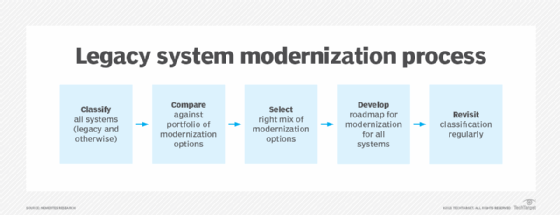management information systems (MIS)
What is management information systems (MIS)?
Management information systems (MIS) is a department within an enterprise responsible for controlling the hardware and software systems that the organization uses to make business-critical decisions. In addition to describing a department within a company, the term "MIS" can also refer to a type of computer software that is used to store, organize and analyze information.
Today, the term MIS is used broadly in a variety of contexts. These include but are not limited to the following:
- Decision support system (DSS) software.
- Resource and people management applications.
- Project management.
- Database retrieval applications.
What is MIS in a software context?
MIS software is used to track sales, inventory, equipment and related business information.
In the past, these applications ran on mainframe computers. However, as computing systems evolved, organizations began to run MIS software on client-server systems. Today, MIS applications are commonly run in the cloud, including hybrid cloud environments.
Types of MIS software
The following are the four main types of MIS software:
- DSS. A DSS analyzes business data to assist managers with decision making. For example, a DSS could project revenue figures based on new product sales assumptions.
- Transaction processing system (TPS). A TPS processes the routine transactions associated with a business. Examples include payroll processing, order processing for an e-commerce business and invoicing.
- Management support system (MSS). An MSS stores and organizes data, enabling end users to generate reports and analyze data to address business needs and inform planning. A data warehouse is an example of a MSS.
- Expert systems. An expert system provides managers with insights and advice based on artificial intelligence (AI). In an expert system, the AI is trained to simulate the knowledge of a human expert in a particular field.
The early history of MIS departments
The MIS department was originally an organization's entire information technology (IT) department. From the 1960s through the early 1980s, practitioners and business schools generally referred to MIS, rather than IT.
In these early days, enterprise computing's main role was to help the CEO and CFO with information systems (IS) management for tasks that were key to running the business, such as order entry, accounting and budgeting. No enterprise applications yet existed; instead, programmers painstakingly wrote code to carry out these functions, usually on a mainframe.
These systems were business critical, meaning the business would fail if it had to go back to manual methods. Thus, if the MIS department was unsuccessful, the business was in danger. The CFO typically oversaw the MIS department to ensure that developers and administrators delivered what accounting needed.
Shifts in roles and terminology: From MIS to IS to IT
In the 1980s, with the advent of personal computers that could run spreadsheets, the scope of enterprise computing responsibilities began to change. Adoption of personal spreadsheets took business-critical processes out of the domain of upper management.
As a result, MIS departments needed to service a wider range of users and to deploy both external and internal software programs. To reflect this new set of internal customers, organizations began to change the name of the MIS department to IS. Through this shift, the MIS team became only one -- yet still vital -- part of the overall IS department.
In the 1990s, the rise of the enterprise application brought about a new set of IS tasks. Companies succeeded by providing better services than their competitors to the consumer via a mix of enterprise and homegrown applications.
These applications also performed a wider range of functions than the MIS department had previously handled -- for example, enterprise resource planning, supply chain management and sales force automation. Many of these tasks were not solely the property of the IS department. Outside vendors, outsourcers and line-of-business computing departments now all claimed a share of enterprise computing.
In enterprise architecture, the IS department thus became more of a strategic director of the organization's software and underlying hardware technologies and less of a controlling central entity. Again, organizations began to change the department's name to reflect its new role: IS departments came to be known as IT, and the original MIS department became a smaller part of the larger whole.
MIS departments vs. IT management
Although the boundaries between MIS and IT management have become fuzzy over the years, an MIS team still typically covers systems that are critical to the company's ability to survive, including accounting and order entry. In many businesses, MIS teams also handle legacy software and hardware.
Legacy systems might have been coded by programmers who have long since retired, in some cases leaving no documentation for the systems. This is equally a role of IT management and business coordination: The enterprise should upgrade or modernize legacy systems very carefully and with high appreciation of the risks involved.

Therefore, the importance of MIS -- and the people who support it and know its quirks -- remains high, even if it is now a little-discussed part of enterprise IT. Upper management should understand the importance of MIS in the context of enterprise revenue.
The business value of MIS departments and applications
Both MIS software and MIS departments can help companies gain a competitive advantage, as both help organizations increase productivity by enabling workers to spend more time on value-generating tasks.
The data managed by MIS software tools can help managers make better decisions related to sales, manufacturing, resource allocation and more. Similarly, the MIS department plays an important role in providing support services within an organization, such as the following:
- Governance. Governance involves systems and controls over employees' use of computing systems. The MIS department defines, manages and enforces the rules covering how and whether employees can access the company's technologies and network infrastructure. The MIS department is responsible for IT security and enforcing codes of conduct related to computer systems use.
- Infrastructure. An organization's IT infrastructure is comprised of the technology systems that support the business' day-to-day functioning -- for example, phones, desktop and laptop computers, servers, application software and cloud computing. The MIS department provides internal help desk and support services, assisting employees and troubleshooting issues related to the infrastructure.
- Data management. Data management involves provisioning and managing systems that enable employees to access and update critical business data. The MIS department is responsible for ensuring the availability and security of the organization's data management systems.
MIS careers
The MIS job description is likely to include duties in both finance and IT administration. The MIS career entails extensive planning and analysis for large-scale and business-critical projects, which often requires experience or education in finance and economics.
Common MIS roles and responsibilities include network and IT systems management, business systems analysis, data integration, and compliance and audit preparation. A strong MIS candidate should also have soft skills such as being a capable communicator who can liaise with the business units that rely on the MIS department.
A career in MIS could entail evaluating business applications and selecting those that will help the enterprise achieve its goals in sales, marketing or another area. In turn, the MIS department then deploys and manages these applications throughout their lifecycle.
MIS jobs often require a degree in IS management, computer science or a related field. Candidates should be able to manage IT and software vendors and troubleshoot and optimize computer systems and applications. In addition, they should be able to track metrics related to how effectively an application supports business objectives.






